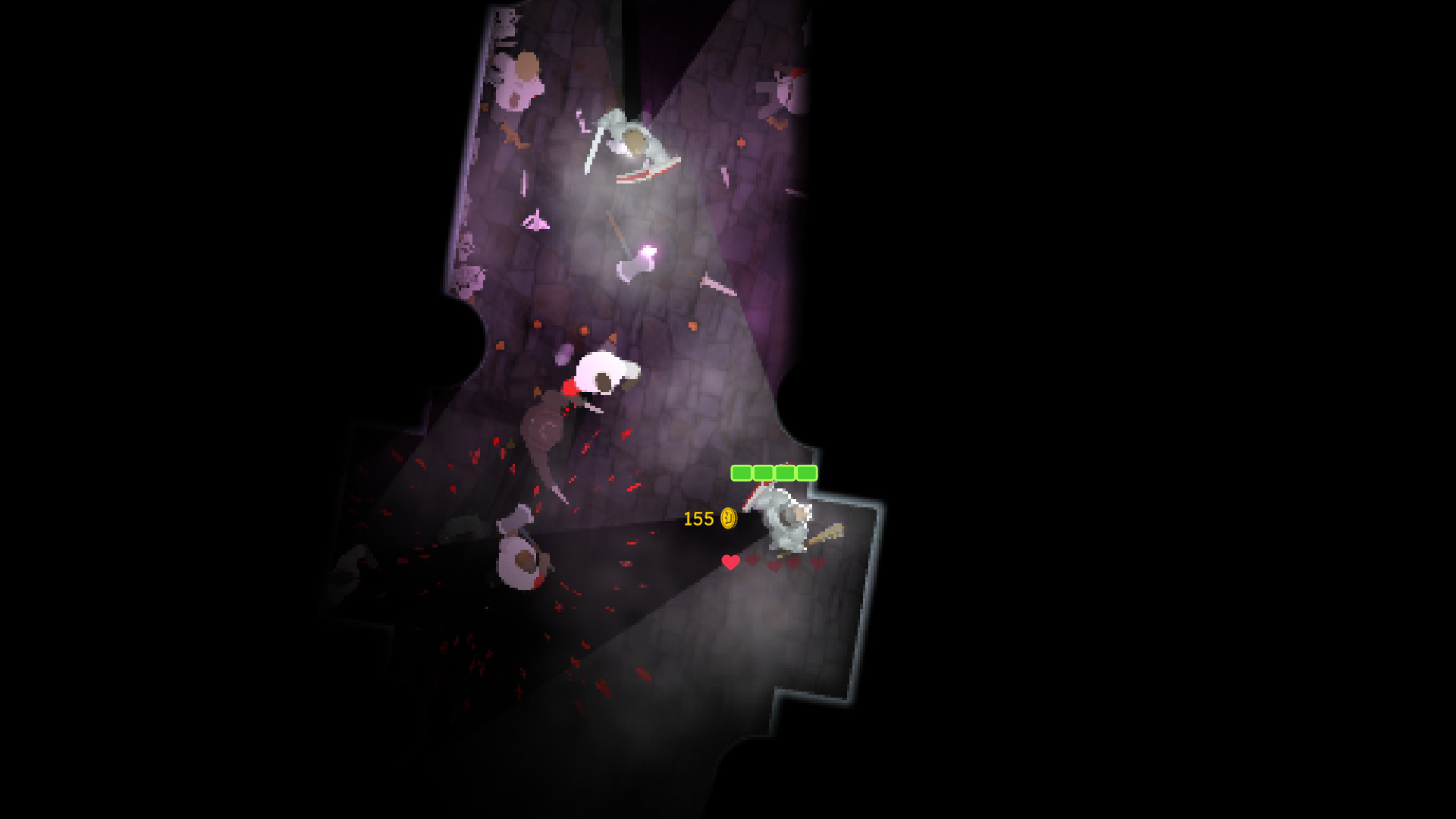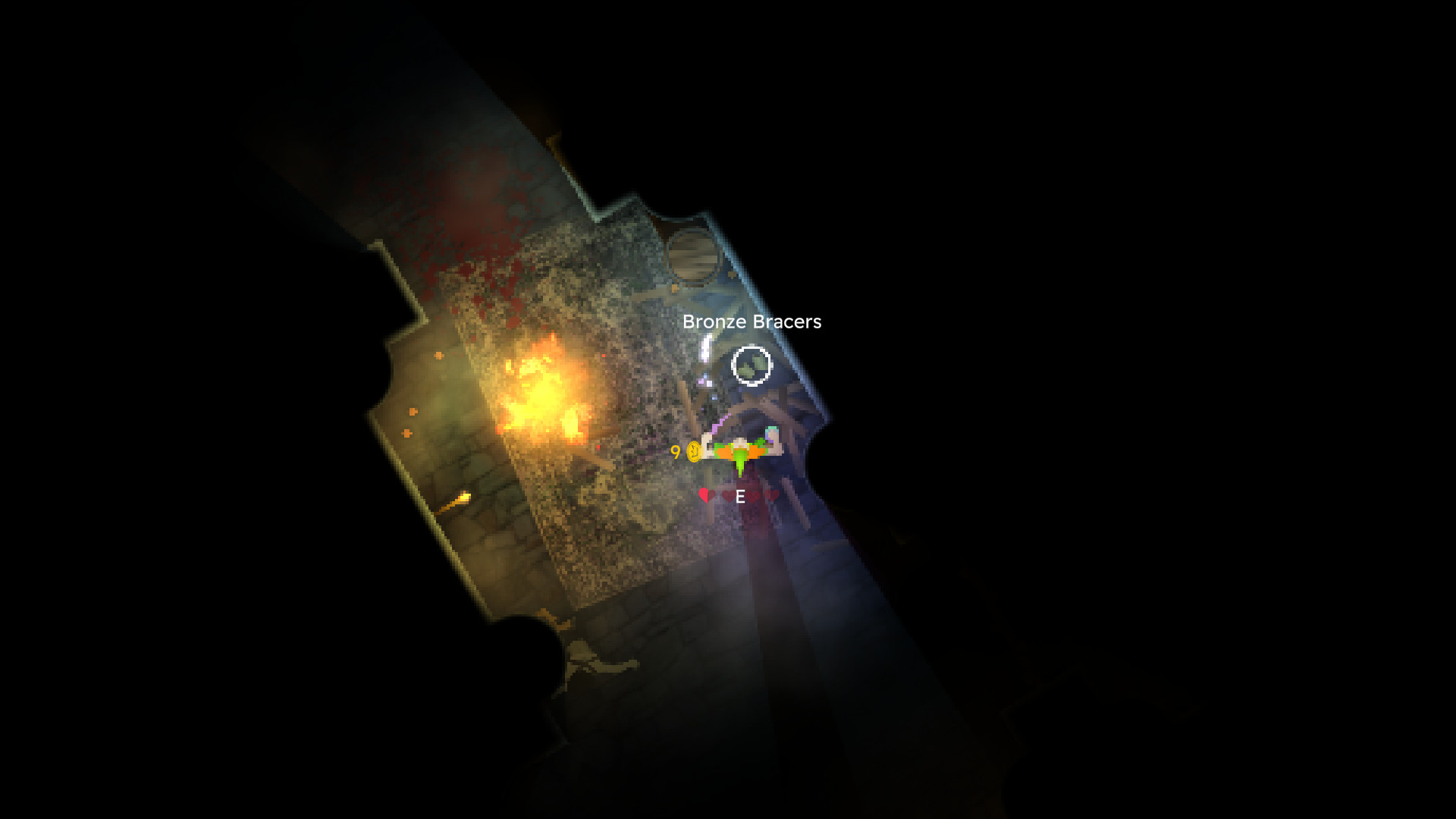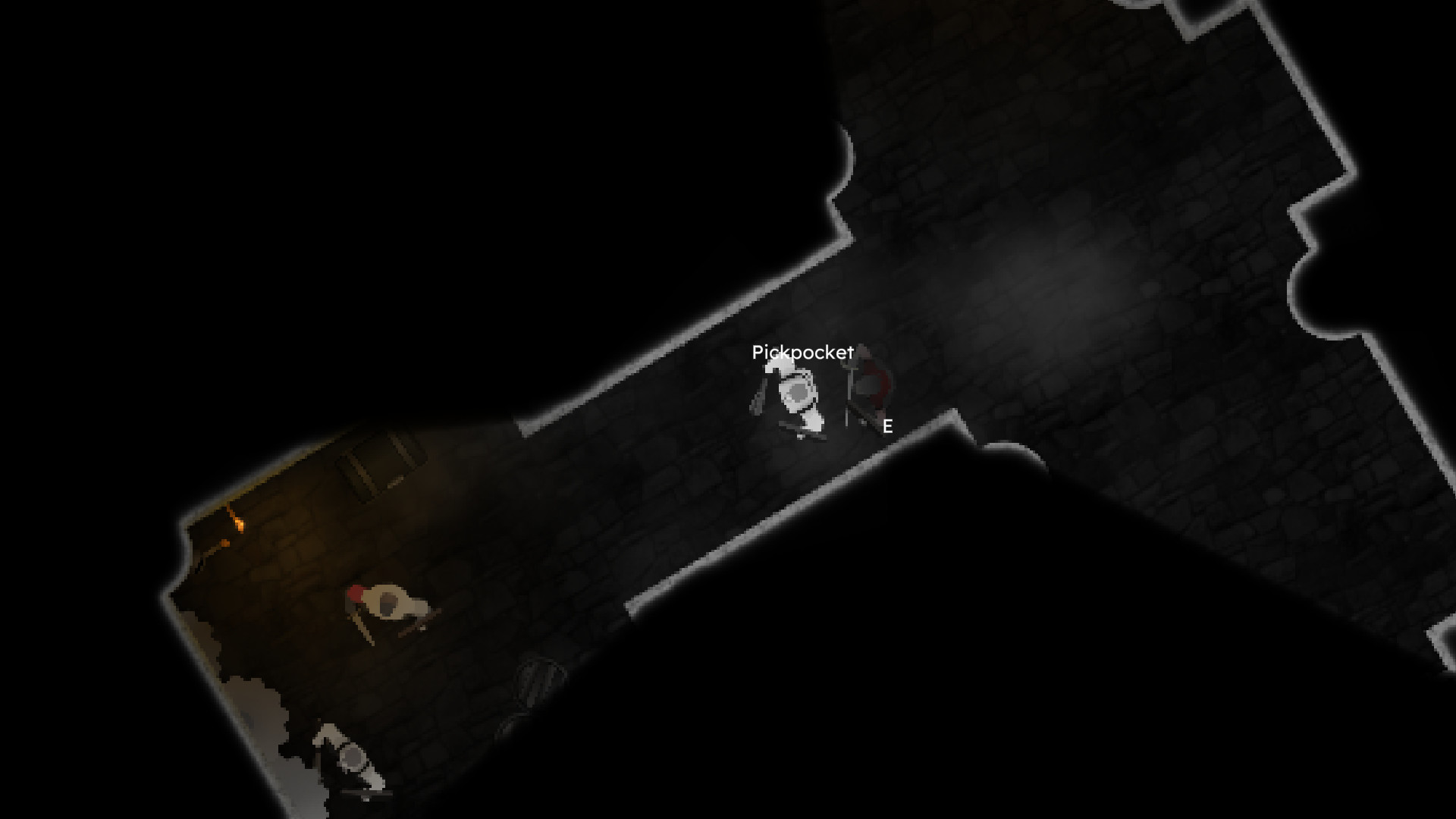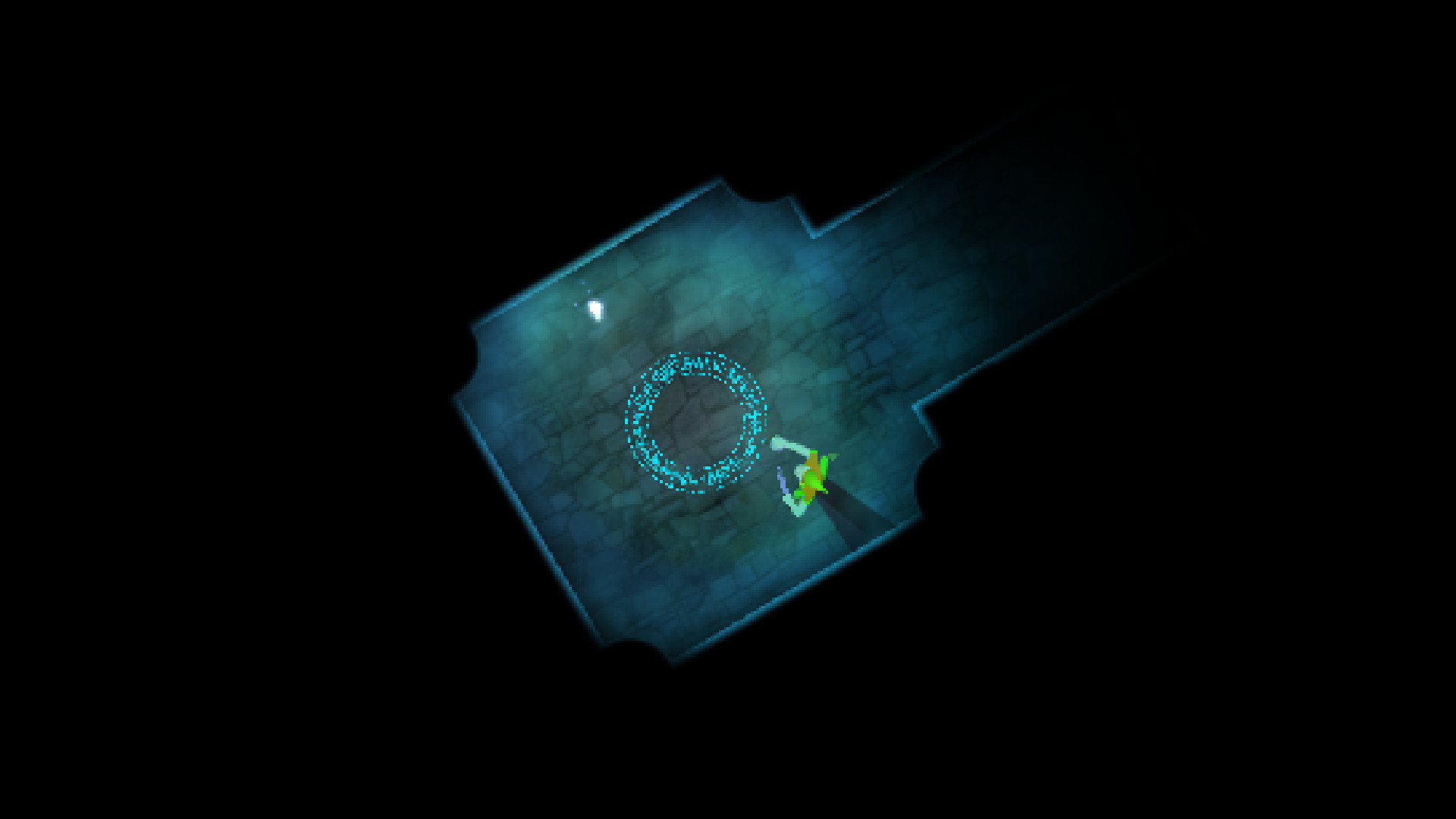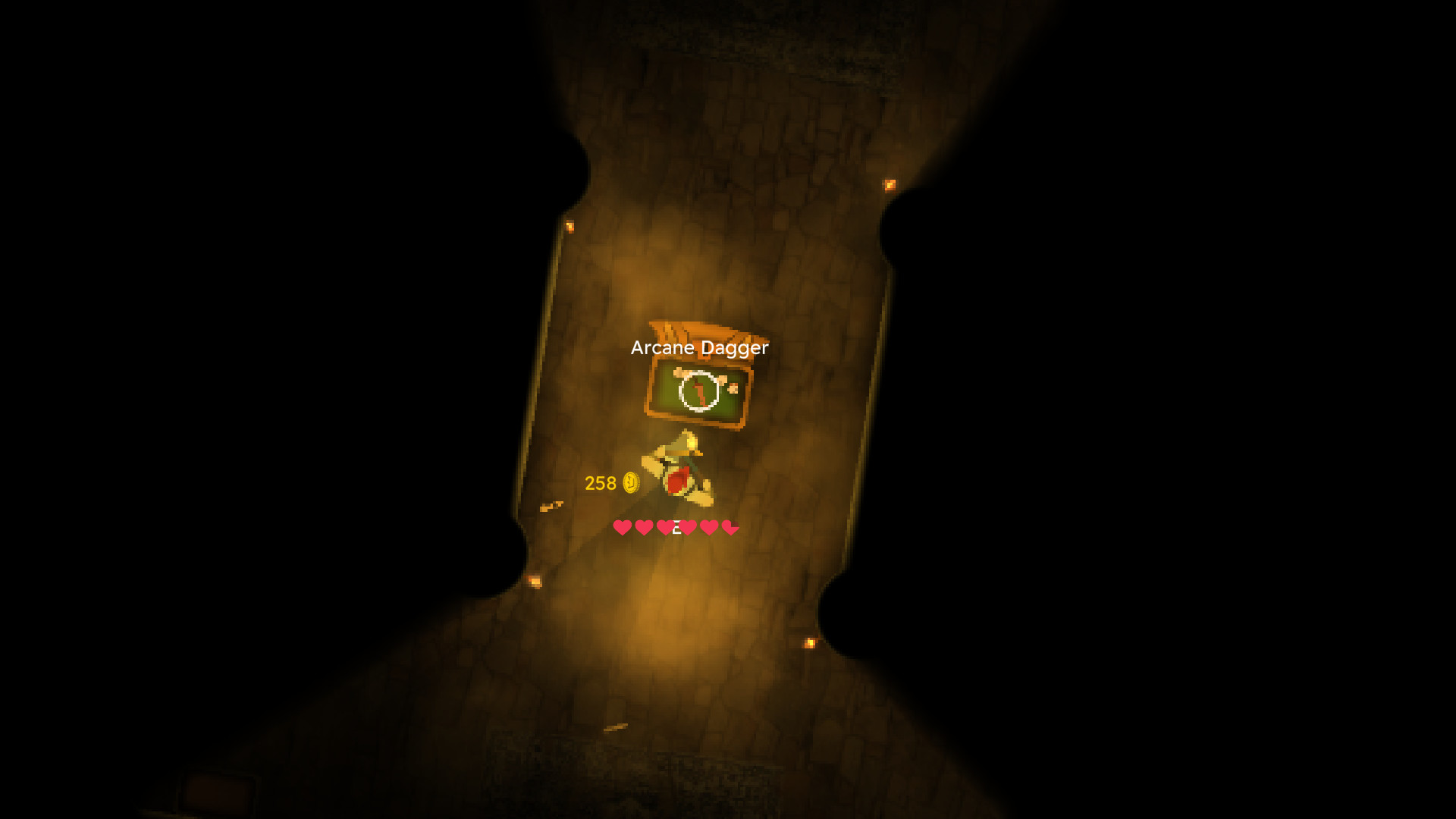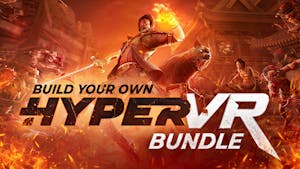
STEEL THYSELF, AND DESCEND!
The servants of T̴̨̈́h̴̛͉e̷̦͌ ̷̡́I̷̫̐ń̵̦v̸̢̈́e̷͇͐r̷̩͋ẗ̷͈́ḛ̸̽d̵̬̆ ̵̀ͅT̶̖̈́o̵͎͋w̶̹̾e̸͎͊r̷̬͝ venture forth each night, dragging the meek and fearful from their homes down into the Tower's abyssal depths, never to return.It is up to you to brave the dangers beneath the earth. Up to you to slay those behind the horror.
To descend ever deeper... INTO EVIL.
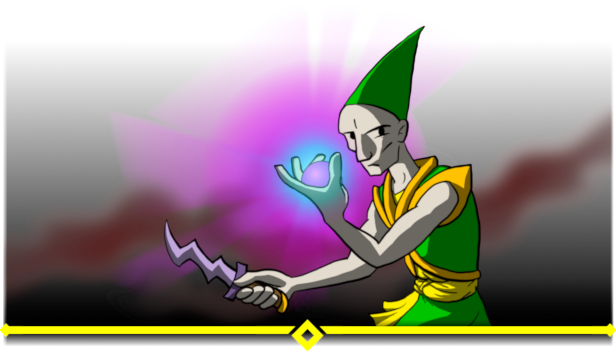
A Modern Old-School Roguelike
INTO EVIL is a modernized take on classic games such as ADOM, NetHack, and Diablo.But what does that actually mean?
THINGS INTO EVIL IS NOT:
- It is not Turn-based: Gameplay is real-time, with fast-paced, physics-based action combat!
- It is not Grid-based: Instead of navigating a bunch of squares, the dungeons of T̴̨̈́h̴̛͉e̷̦͌ ̷̡́I̷̫̐ń̵̦v̸̢̈́e̷͇͐r̷̩͋ẗ̷͈́ḛ̸̽d̵̬̆ ̵̀ͅT̶̖̈́o̵͎͋w̶̹̾e̸͎͊r̷̬͝ conform to their own arcane geometry.
- It is not ASCII: Experience the wonder of actually seeing what is happening in-game!
- It is not Stat-based: Classic RPGs often have many different character attributes (Strength, Dexterity, etc) that are used to define character builds. Into Evil instead presents abilities that are more directly part of gameplay!
- Deadly: Every enemy is a threat, and when death comes it is permanent. The cycle begins once more, and the dungeon will reset.
- Dark: Light, vision, shadows and more; what you can see is a core gameplay mechanic!
- Reactive: Many systems work together to make the world of INTO EVIL feel alive! Sneak around the unwary, burn or freeze foes, manipulate light and shadow, control the minds of enemies, summon abominations to aid you in battle, and more - the clever and dedicated will always find ways to prevail!
- Rewarding: Find powerful artifacts and abilities to build your hero into a titan of power!
- Multiplayer: Up to four friends can face the horror together, or battle each other in the arena!
Greetings, Unfortunate Souls!
You have been summoned for the first full-fledged devlog, dedicated to everything going on behind the scenes.
Today I wanted to share information about the process, experience, and inspirations that led to the creation of INTO EVIL just the way it is.
In the beginning, there was a game.
I have always been a huge Souls series nerd and have been playing all of them: from Demons Souls to Elden Ring. It was a big inspiration for the control scheme and general level of difficulty (by which I mean punishing, but fair).
Demons Souls has always been just one brick of inspiration. I was always keen on creating the game which had everything that I loved about ARPGs, while getting rid of everything else that I did not.
Teleglitch a roguelike top-down shooter with retro pixel graphics, can be considered to be the main source of inspiration for INTO EVIL. This game was the one that showed me its possible to efficiently create a compelling real-time roguelike with minimal assets. Without this inspiration, I dont think I would ever actually tackle this project.

Beyond that, many other titles helped shape INTO EVIL into the game you know today. Here is the list of projects that I would like to give a shout-out:
- Catacomb Kids has fantastic systems-driven gameplay;
- Vagante has compelling exploration and vibes;
- And of course, I tried to carry some fun combat flashiness right from Blast Brawl 2!
For example, beyond simple things like removing grinding and getting rid of ridiculously small bonuses (like 2% increased fire resistance or ignore 5% of enemies frost resistance), one of the big things I wanted to change was damage being the universal answer to most problems.

In most ARPGs abilities tend to either increase the damage players deal or reduce the damage they suffer in some way. I always found it to be a rather boring and reoccurring issue that needed to be revised. And besides, I always wanted to play with non-damaging abilities being a viable option. This led to the following in-game features:
- The display of enemy health bars and the minimap became actual in-game abilities the player needed to discover;
- Complex stealth system: enemies react to the player not only when he enters their field of vision, but also rely on hearing, the players interaction with objects, etc.;
- Elemental interactions;
- Complex environmental effects;
- Making every item more interactive and diverse from one another. For example:
[list] - While axes have a different moveset from daggers; lanterns, torches, and throwing knives have diverse ways to use them.
It was important for me to make players not just think about the best OP build possible, but to force them to stay constantly engaged and use all moment-to-moment options they have.
On the second day, there were characters and aesthetics.
While creating INTO EVIL I always wanted to help players understand the storyline better with the help of the art style. I wanted to help players see beyond pixels, if it makes sense with in-game portraits of characters and bosses done in a different artstyle, standing out from the rest of the game. Thats why I have always liked to describe INTO EVILs art style as super-vivid gothic horror but slightly cartoon-y.

Characters and bosses were influenced by tropes and common fantasy concepts. I tried to keep the designs simple, but easily distinguished from one another to provide the player with a simple but quick and clear understanding of the core for any encounter. For example, the playable characters have an intentionally different vibe from the bosses the player faces. The player is meant to feel like ordinary struggling folk, encountering monstrous beings. While bosses and enemies are corrupted by otherworldly evil into contorted abyssal nightmares so theyre much more grotesque.
On the third day, there was music.
The choice of music was one of the crucial things that I had to decide on. One of INTO EVILs highlights is the very intense boss fights where humans clash against horrible grotesque monstrosities. I wanted to make the music fully reflect the concept of a crescendoing epic dread and make the players skin crawl.To fulfill such a goal, most dark fantasy ARPGs tend to have dramatic orchestral soundtracks or something inspired by Diablos soundtrack. I wanted INTO EVIL to sound more grungy and coarse, abrasive even. Darksynth felt just like a natural fit. After perusing a bunch of artists, I settled on the collaboration with Dav Dralleon. His vibe of never-ending apocalypse as well as gut-wrenching horror seemed like a perfect match.
Without spoiling the future regions, I am stocked to have all the music for INTO EVIL be done by Dav. Im sure youll find the games OST pretty memorable as well. Meanwhile, go check out his other stuff!
As you may see, INTO EVIL is the game that has been created out of deep passion and years of experience. It could have become many things, but here we stay: a gruesome tale of the Inverted Tower where only the most unfortunate souls have the slimmest chance to reach its deepest levels. What is waiting for you in the future? Only time will tell.
While waiting for future updates, dont miss a chance to experience the dread of INTO EVIL by braving the Open Demo. Ally with friends in Multiplayer, betray your foes in the PvP Arena mode, and dont forget to brave down the Inverted Tower.

Have you ever found yourself longing to discuss the effectiveness of border posts? Play Russian roulette with a shotgun? Explore the mysterious Great Well, unwanted by the world above? Or maybe join the Tulpar Crew? Talk horror and post quality memes? Then join the Critical Reflex Discord to stay updated and finally connect with your allies!
We will keep an eye on you.


Minimum Setup
- OS: Anything up-to-date
- Processor: Like pretty much anythingMemory: 2 GB RAM
- Memory: 2 GB RAM
- Graphics: Like pretty much anything
Recommended Setup
- OS: Anything up-to-date
- Processor: Like pretty much anythingMemory: 2 GB RAM
- Graphics: Like pretty much anything
[ 6488 ]
[ 2268 ]
[ 1913 ]

